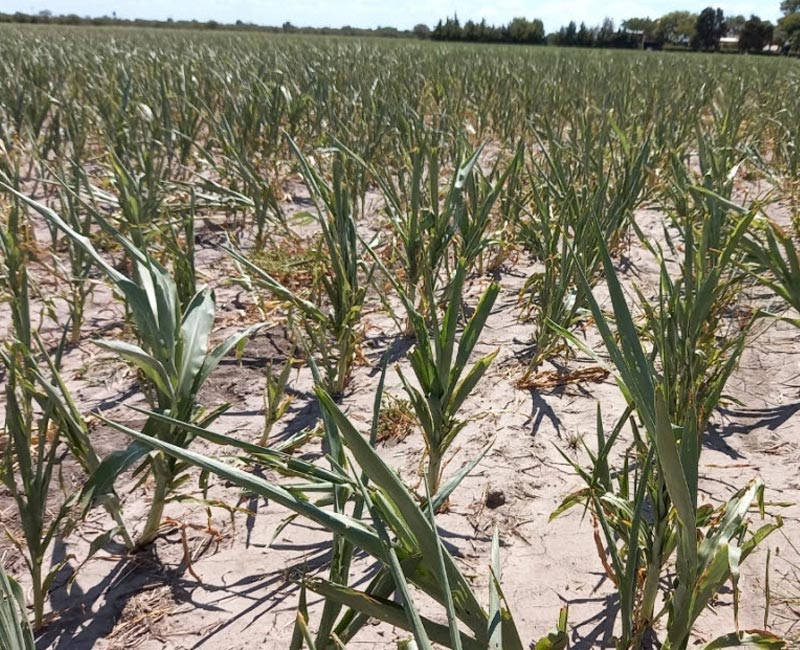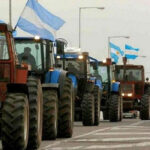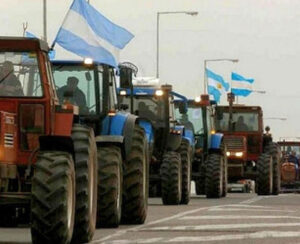
La Bolsa de Cereales de Buenos Aires calculó una producción de 25 millones de toneladas de soja, la campaña más baja desde el ciclo 2000/2001.
La Bolsa de Cereales de Buenos Aires difundió por la tarde nuevas estimaciones de producción de soja y maíz para el ciclo 2022/2023. Según las proyecciones, la dramática situación provocada por la emergencia climática sigue agravándose.
En este sentido, se prevé que la cosecha de soja sea de 25 millones de toneladas, la cifra más baja desde la campaña 2000/2001.
De acuerdo con el último informe de la institución porteña, el clima fue determinante para la drástica baja de la producción sojera.
Primero, la sequía que viene golpeando desde junio del año pasado. Luego, se sumaron las heladas tempranas durante febrero. Y, por último, la última ola de calor que azotó al país desde el 27 de febrero, con temperaturas que superaron los 40 grados.
De esta manera, con rendimientos muy pobres (los más bajos en 22 años) e importantes pérdidas de área cosechable, la Bolsa de Cereales de Buenos Aires redujo a 25 millones de toneladas la proyección, lo que representa una caída del 42% con respecto al ciclo anterior.
En la misma línea, la Bolsa de Comercio de Rosario también había bajado considerablemente sus estimaciones en soja a 27 millones de toneladas.
Al respecto, la Bolsa rosarina calculó que sólo en los cultivos de soja, trigo y maíz, que constituyen el 87% de la producción de granos en Argentina y el 43% de las exportaciones totales del país, las pérdidas superan los US$ 14.140 millones.
Según lo informado por la entidad, esto equivale al costo total de sembrar la próxima cosecha 2023/24 para el productor agropecuario. Pero la menor producción, afecta también a otras actividades asociadas. Si se le suma la menor demanda de fletes, mano de obra y servicios financieros, las pérdidas totales para la actividad económica nacional llegan a US$ 19.000 millones.
“La sequía ya se ha cobrado 3 puntos del PBI argentino estimado para el año 2023”, señaló la entidad.
Pero la soja no es el único cultivo afectado por la crisis climática. También el maíz está sufriendo las consecuencias. En el mismo informe, la Bolsa de Cereales porteña bajó las proyecciones del cultivo a 36 millones de toneladas, descendiendo un 30% (16 millones de toneladas menos) que las recolectadas la campaña anterior.
Esa merma representa la campaña más baja desde el ciclo 2014/15, cuando tributaba retenciones del 23% y estaba intervenido el mercado con los famosos ROEs.
La disminución en la producción de este cereal de debió, principalmente, a la pérdida de rinde del maíz tardío (sembrado en diciembre) por las altas temperaturas, sumado a que la cosecha de las plantaciones de maíz tempranos (sembrado en septiembre) registran rendimientos medios por debajo de la serie histórica de los últimos 21 años.
Este fuerte golpe productivo tiene un fuerte impacto en la liquidación de divisas del campo. Según datos de la Cámara de la Industria Aceitera de la República Argentina, entre enero y febrero, se liquidaron US$ 1.500 millones contra los casi US$ 5.000 millones del mismo período de 2022. En lo que va de marzo, se liquidaron poco más de US$ 600 millones y quedan solamente 12 días hábiles, por lo que se prevé que el número sea también bajo.
Para los productores, la “suerte está echada” en este ciclo productivo y, pese a que llueva, las pérdidas son irrecuperables.
En contraposición con este panorama, especialistas señalaron que la siembra de trigo pone luz en el camino, teniendo en cuenta las condiciones climáticas proyectadas.
En este sentido, un informe elaborado por la Mesa Nacional de Monitoreo de Sequías, conformada por diferentes organismos públicos, dio por finalizada “La Niña” este miércoles. Y precisó que los indicadores oceánico y atmosférico “presentan valores dentro del rango de neutralidad”, en tanto “el pronóstico indica una muy alta probabilidad a que se mantenga la fase neutral al menos hasta el inicio del invierno austral”.
Drought: reestimated soybean and corn crop losses exceed US$19 billion
The Buenos Aires Grain Exchange estimated a production of 25 million tons of soybeans, the lowest season since the 2000/2001 cycle.
The Buenos Aires Grain Exchange released in the afternoon new soybean and corn production estimates for the 2022/2023 cycle. According to the projections, the dramatic situation caused by the weather emergency continues to worsen.
In this sense, the soybean harvest is expected to be 25 million tons, the lowest figure since the 2000/2001 season.
According to the latest report of the Buenos Aires institution, the weather was a determining factor for the drastic drop in soybean production.
First, the drought that has been hitting since June last year. Then, there were the early frosts during February. And finally, the last heat wave that hit the country since February 27, with temperatures exceeding 40 degrees Celsius.
Thus, with very poor yields (the lowest in 22 years) and significant losses in harvestable area, the Buenos Aires Grain Exchange reduced its projection to 25 million tons, which represents a 42% drop with respect to the previous cycle.
In the same line, the Rosario Stock Exchange had also considerably lowered its soybean estimates to 27 million tons.
In this respect, the Rosario Stock Exchange calculated that only in soybean, wheat and corn crops, which constitute 87% of Argentina’s grain production and 43% of the country’s total exports, losses exceed US$ 14.14 billion.
According to the entity, this is equivalent to the total cost of sowing the next 2023/24 harvest for the agricultural producer. But the lower production also affects other associated activities. If we add the lower demand for freight, labor and financial services, the total losses for the national economic activity reach US$ 19 billion.
“The drought has already claimed 3 points of Argentina’s GDP estimated for 2023,” the entity pointed out.
But soybean is not the only crop affected by the climate crisis. Corn is also suffering the consequences. In the same report, the Buenos Aires Grain Exchange lowered the crop projections to 36 million tons, a 30% decrease (16 million tons less) than those harvested the previous season.
This decline represents the lowest campaign since the 2014/15 cycle, when the crop was subject to 23% withholding taxes and the market was intervened with the famous ROEs.
The decrease in the production of this cereal was mainly due to the loss of yields of late corn (sown in December) due to high temperatures, added to the fact that the harvest of early corn plantations (sown in September) recorded average yields below the historical series of the last 21 years.
This strong productive blow has a strong impact on the liquidation of foreign currency in the field. According to data from the Argentine Chamber of the Oil Industry, between January and February, US$ 1,500 million were liquidated against almost US$ 5,000 million in the same period of 2022. So far in March, just over US$ 600 million have been settled and there are only 12 working days left, so the number is also expected to be low.
For producers, the “die is cast” in this production cycle and, even if it rains, losses are irrecoverable.
In contrast with this panorama, specialists pointed out that wheat sowing puts light on the way, taking into account the projected weather conditions.
In this sense, a report prepared by the National Drought Monitoring Board, formed by different public agencies, considered that “La Niña” ended on Wednesday. And it specified that the oceanic and atmospheric indicators “present values within the neutral range”, while “the forecast indicates a very high probability that the neutral phase will be maintained at least until the beginning of the austral winter”.
Translated with www.DeepL.com/Translator (free version)











Noticias relacionadas
La transición energética mundial se aceleró en 2025: en qué lugar está Argentina
Bancarios acuerdan aumento salarial en línea con la inflación y el básico supera $1.850.000
Día del Padre: tras la caída de ventas, desde CAME advierten una “situación preocupante” en el comercio